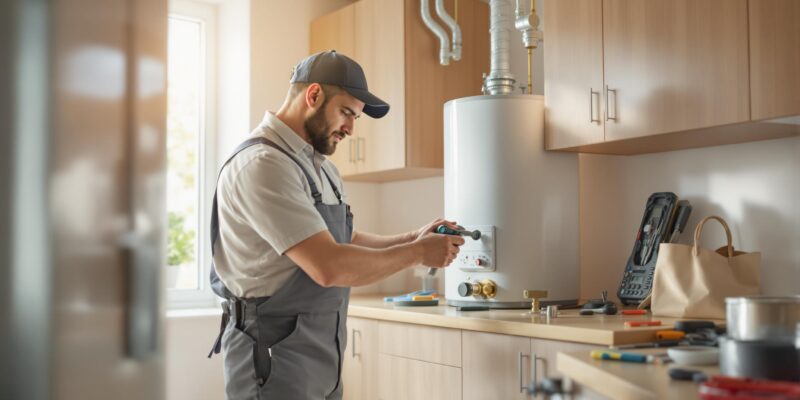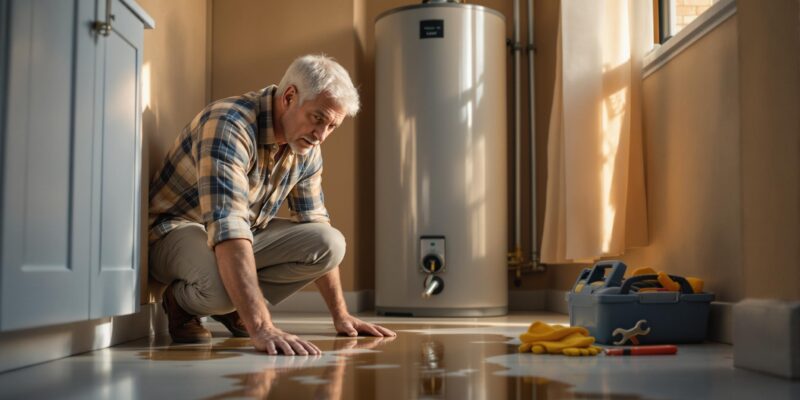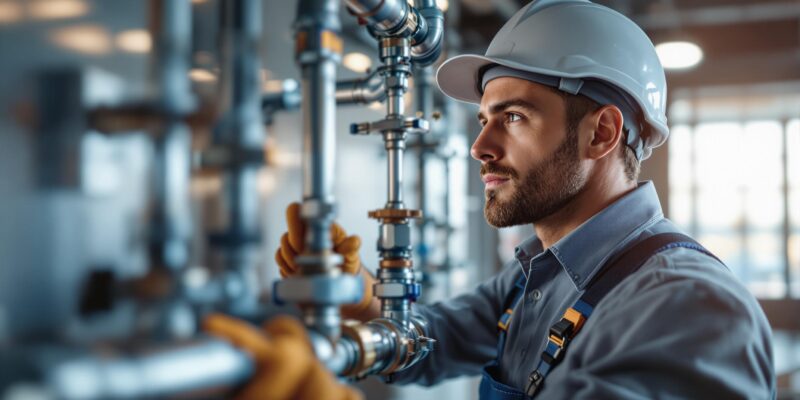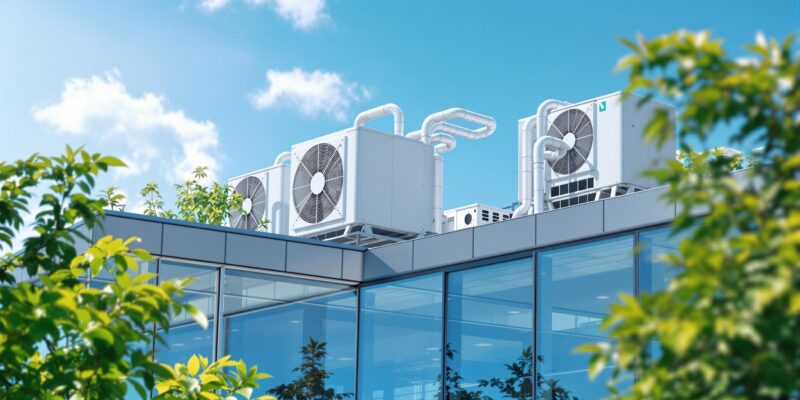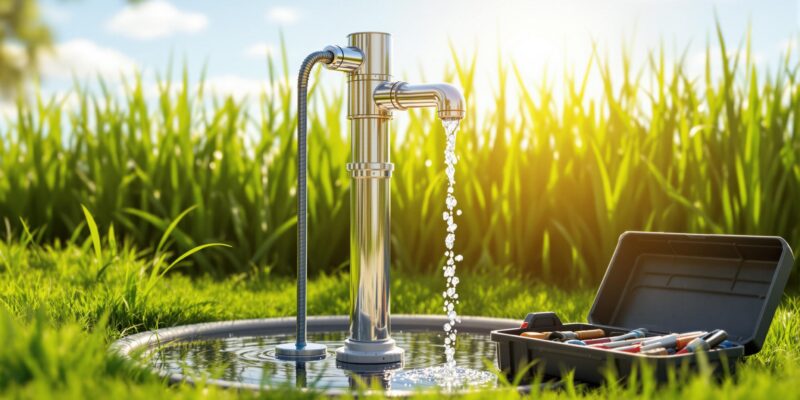Water Conditioner Installation Steps
Installing a water conditioner improves water quality, protects plumbing, and extends the life of appliances. This guide breaks down the process into simple steps: preparation, mounting the unit, connecting plumbing, and ensuring safety. Here’s what you need to know:
- Preparation: Choose a stable, accessible spot near the main water line with adequate clearance. Gather tools like a drill, pipe cutter, and plumber’s tape.
- Mounting: Secure the unit to a plywood backer board using mounting brackets.
- Plumbing Connection: Use the right materials (e.g., flux for copper pipes, NSF-certified tape for PVC) and install valves for maintenance.
- Safety Checks: Test for leaks, confirm proper grounding, and ensure pressure stays between 30-80 PSI.
Regular maintenance, like replacing filters every 6-12 months, keeps the system efficient. For complex setups, hiring professionals ensures compliance with safety codes and avoids costly mistakes.
Key Tip: Use push-to-connect fittings for easier, leak-resistant connections. Proper installation and upkeep save money and deliver clean, high-quality water for years.
How To Install Water Softener System – Complete Installation Guide
Preparation for Installation
Getting everything ready beforehand ensures your water conditioner works efficiently and protects your plumbing and appliances, as discussed earlier.
Selecting an Installation Site
Pick a spot close to the main water line that offers at least 60 inches of vertical clearance and 45 inches of floor space. Make sure it’s easy to access for future maintenance [4]. The area should be stable, well-lit, and away from direct sunlight. If your unit needs electricity, ensure there’s a nearby outlet.
Tools and Materials Needed
| Essential Tools | Required Materials |
|---|---|
| Drill, pipe cutter, level, safety gear | Mounting brackets, plumber’s tape, pipe fittings, screws/anchors |
Ensure the pipe fittings match your plumbing system [1]. Avoid using pipe dope or PVC primer/glue on threaded fittings to prevent damage to plastic components [4].
Checking Water and Power Supply
Make sure the water and power supplies are ready for safe installation. Completely shut off the main water valve [5]. If the unit needs electricity, confirm that an outlet is within reach. For metallic plumbing, install two grounding clamps to avoid electrical risks [4].
“Proper grounding is essential when installing on metallic plumbing. Securely install two grounding clamps to prevent electrical shock and ensure safety.” [4]
If the plumbing setup is complicated, it’s a good idea to consult professionals like Hydrodynamics. They specialize in water conditioner installations and can ensure everything meets local regulations.
Once the site is ready and utilities are secure, you can move on to the installation process.
Installation Steps
Now that everything is prepared, let’s walk through the installation process step by step.
Mounting the Unit
Start by attaching a plywood backer board to the wall studs for added stability. Make sure it’s level before moving forward. Align the mounting brackets with the unit’s mounting points, checking the level again, and then secure them using heavy-duty screws. Once the unit is firmly mounted, you’re ready to connect it to the plumbing system.
Connecting to Plumbing
Carefully measure and cut the pipes to the required length, then clean the ends with sandpaper for smooth connections. If you’re working with copper pipes, apply flux before soldering to ensure a strong bond [1]. Keep the alignment precise to avoid stress on the joints. Install valves and a bypass system to allow for maintenance without interrupting your home’s water supply [3].
| Connection Type | Materials Needed |
|---|---|
| Copper | Flux, solder, torch |
| PVC | NSF-certified tape |
| Metallic | Grounding clamps, #4 copper wire |
“Dry fit all connections before securing them, and use NSF-certified plumber’s tape on threaded fittings. Avoid using pipe dope or PVC primer/glue to prevent damage to plastic fittings” [4].
After securing the pipes and valves, it’s time to install the filter cartridges.
Installing Filter Cartridges
Handle the filter cartridges with clean hands to avoid contamination. Inspect each cartridge for any damage before inserting it into the housing. Turn the cartridges clockwise until they are snug, but don’t overtighten – this could harm the O-rings [6]. Make a note of the installation dates to keep track of replacements and maintain the system’s efficiency [3].
Once everything is installed, check all connections to ensure they are secure, and the system is ready to go.
Safety and Maintenance
Preventing Leaks and Ensuring Functionality
Once installation is complete, it’s time to test for leaks to confirm everything is working as it should. Slowly turn on the water supply and carefully check all connections – especially threaded fittings and joints – for any signs of leakage. A well-installed system will hold steady pressure without dripping or seeping.
Focus on these critical areas:
| Testing Area | What to Check & Fix |
|---|---|
| Connections | Look for moisture; tighten fittings or replace seals if needed |
| Pressure Gauge | Confirm pressure is within 30-80 PSI; adjust regulator if necessary |
| Filter Housing | Ensure cartridge is seated properly and O-rings are intact; reseat or replace if needed |
Once you’re sure the system is leak-free, regular maintenance will keep it running smoothly for years to come.
Maintenance Tips
How often your system needs attention depends on your water usage and quality. Most filter cartridges need replacing every 6-12 months, but this can vary based on your specific conditions [1][3].
“Regular inspections can help identify potential issues early, such as leaks or wear on components” [7][3].
Here are some key maintenance tasks to keep in mind:
- Check pressure readings and inspect O-rings and seals every three months.
- Clean the exterior of the system monthly to prevent dust and grime buildup.
- Test the bypass system every six months to ensure it’s functioning properly.
During your inspections, confirm that the system’s electrical grounding is secure. Keep a log of all maintenance activities, like filter replacements and any repairs, to stay organized and maintain warranty coverage.
If you notice odd noises, reduced water flow, or changes in pressure, address these concerns quickly to avoid further issues. For more advanced repairs or troubleshooting, consider hiring a professional for added peace of mind.
Additional Tips and Professional Help
Using Push-to-Connect Connectors
Push-to-connect connectors make installation easier by providing secure, leak-resistant seals – no special tools required [1][6]. To ensure a proper seal, insert the connector fully until you hear a click. For best results, avoid sharp bends and keep the connector lines in smooth, gentle curves.
These connectors are especially helpful during the plumbing connection phase. However, for more intricate setups or to guarantee everything is installed correctly, hiring a professional can be a smart choice.
Professional Services from Hydrodynamics
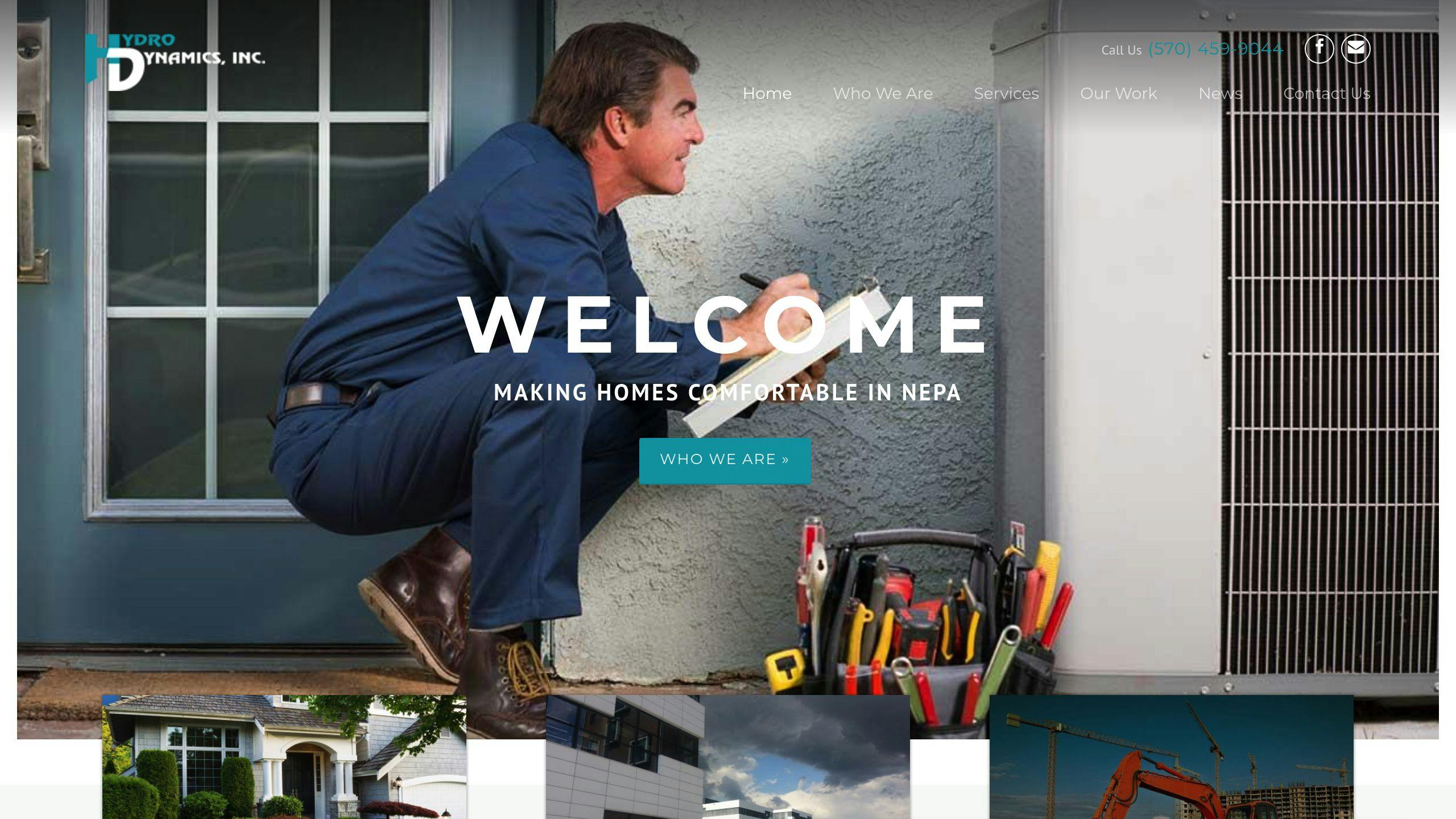
While many installations can be done on your own, more advanced water conditioning systems often require expert handling. Hydrodynamics Inc., a family-owned business since 1994, offers specialized water conditioning installation and maintenance services throughout Northeastern Pennsylvania.
Their services include:
- System sizing and placement advice: Ensuring the system fits your specific needs and space.
- Post-installation testing: Checking and fine-tuning the system for optimal performance.
- Expert installation: Handling grounding and backflow prevention correctly.
For setups involving additional features like check valves or specialized grounding, professional installation can help you avoid expensive errors. Hydrodynamics’ team ensures installations meet safety codes and run efficiently.
Safety Tip: Professionals use grounding clamps and #4 copper wire to ensure proper safety measures. They also make sure the system is protected from freezing and direct sunlight [2][3].
Conclusion
Adding a water conditioner can enhance water quality and prolong the life of your plumbing system. Using durable materials and following the manufacturer’s instructions are key to avoiding leaks and inefficiencies [1][4].
Paying close attention to placement, connections, and safety measures ensures the system runs efficiently. While proper installation is essential, ongoing care – like regular maintenance – keeps the system performing well over time. Choosing NSF-certified materials and adhering to manufacturer guidelines can help sidestep common problems [1][4].
For more complex setups or installations requiring code compliance, working with experts like Hydrodynamics is a smart move. Their knowledge is particularly useful for systems with specialized features or those that need to integrate with existing plumbing.
Routine upkeep, such as replacing filters and conducting system checks, helps your water conditioner stay effective and last longer [3]. A properly installed and maintained unit not only delivers clean water but also protects your appliances and lowers overall costs.
Whether you’re tackling the installation yourself or hiring professionals, preparation and safety should remain your top priorities. Investing in a water conditioner pays off with better water quality, longer-lasting appliances, and fewer maintenance expenses over time [3].


